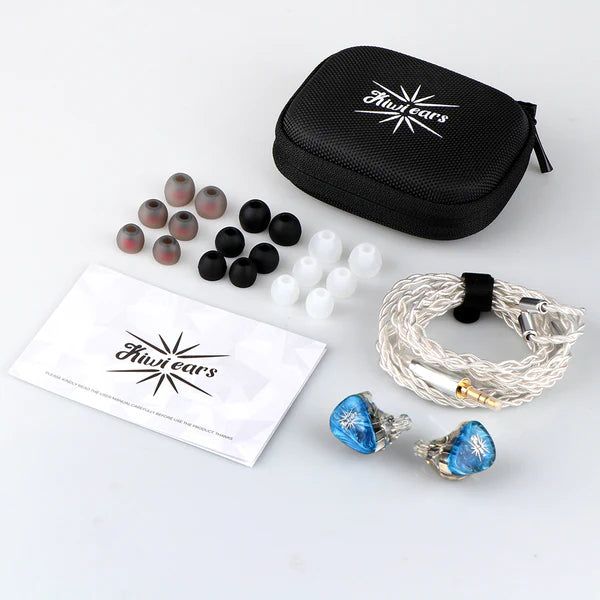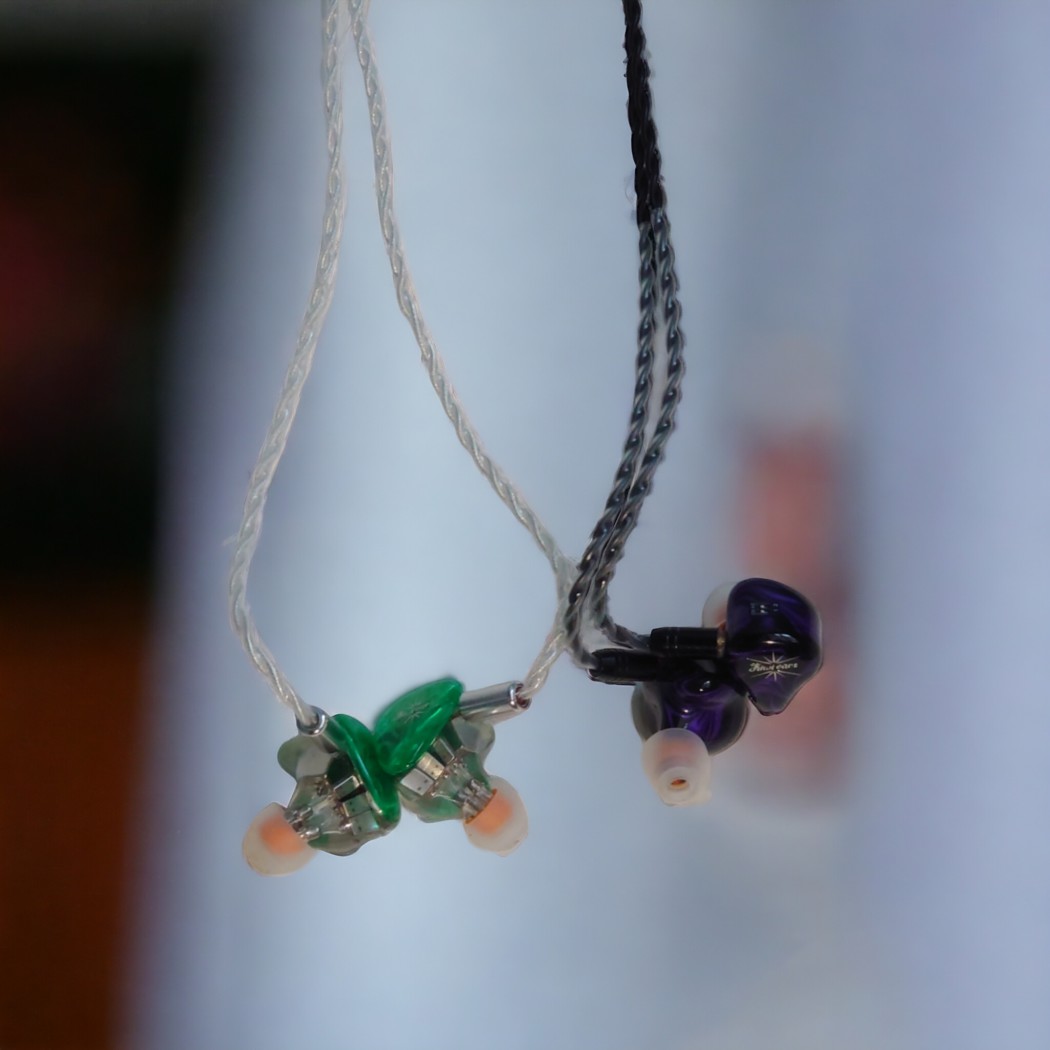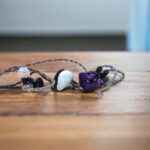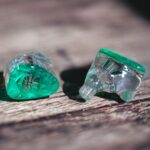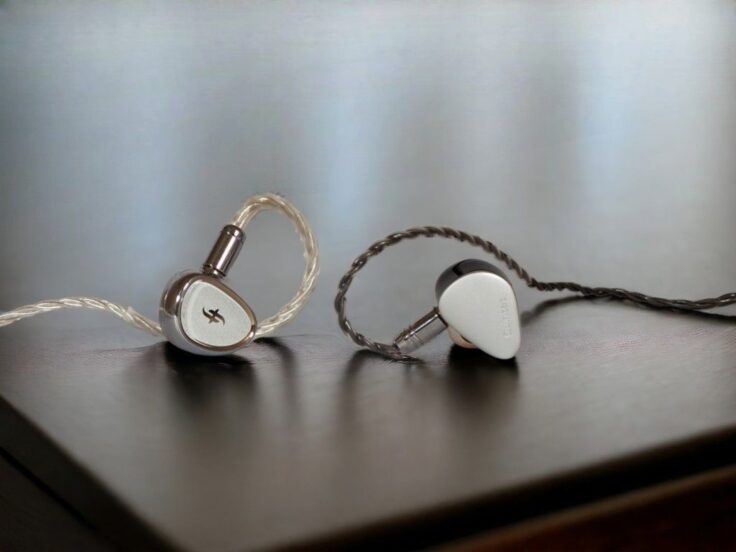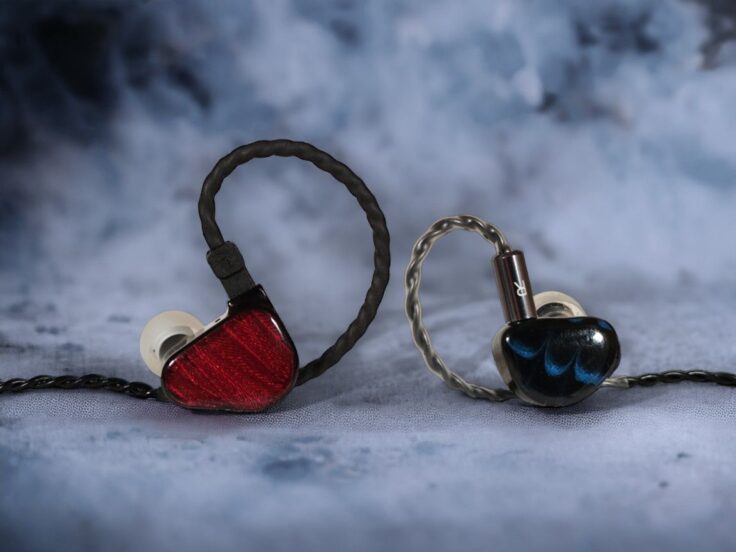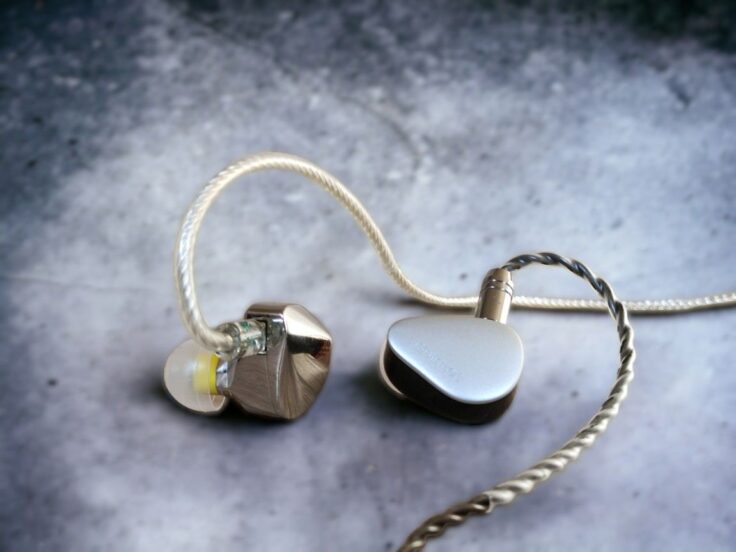Although they look relatively similar on the outside and are both built of medical-grade resin, these are two very different IEMs in terms of internal design, tuning and price.
The Kiwi Ears Quartet lives up to its name and has 4 drivers per side, a mix of 2 balanced armatures and 2 dynamic drivers. The Orchestra Lite has 8 drivers balanced armature drivers only.
At the time of writing the price in USD is 109 for the Quartet and 249 for the Orchestra Lite, making the Orchestra more than twice as expensive.
Price-wise, the Quartet sits between the lower-priced Dolce, Cadenza, Forza and Melody and the $219 Quintet in the Kiwi Ears lineup. We have reviewed the Cadenza and the Quartet earlier. Unlike the Cadenza and Quintet, which are tuned close to “Harman-curve-neutral”, the Quartet is designed to have a rather not-so-neutral sound signature. With the dip switches in stock settings, it’s got a V-shaped signature with more energy in the lows and highs. The bass especially stands out: If the tracks you listen to have bass, you’ll hear it. It is, however, not boosted in a bloated way. This is high-quality bass.
The Kiwi Ears Quartet’s 4 drivers include a proprietary double dynamic driver to handle the powerful bass. Two balanced armatures take care of the rest of the spectrum. The Quartet has a rather large housing for the 4 drivers but is light and comfortable.
There are two dip switches on the Quartet. They adjust the bass and treble up and down. In stock configuration, they are both set in the “up” position, which gives a V-shaped frequency curve/sound signature. That’s how I prefer the Orchestra, and that’s what I will compare the Orchestra Lite to in this article. You can read more on this in my Quartet review here.
The Kiwi Orchestra Lite is a resigned version of the renowned Kiwi Ears Orchestra, with a less cost-intensive design and more efficient drivers. Similar to the original, the Lite version features 8 custom-balanced armature drivers. These are set up like this: Two ultra tweeters for the treble, four midrange balanced armature drivers for the mids, and two subwoofer drivers for the lows. The Orchestra Lite utilizes a three-way passive crossover.
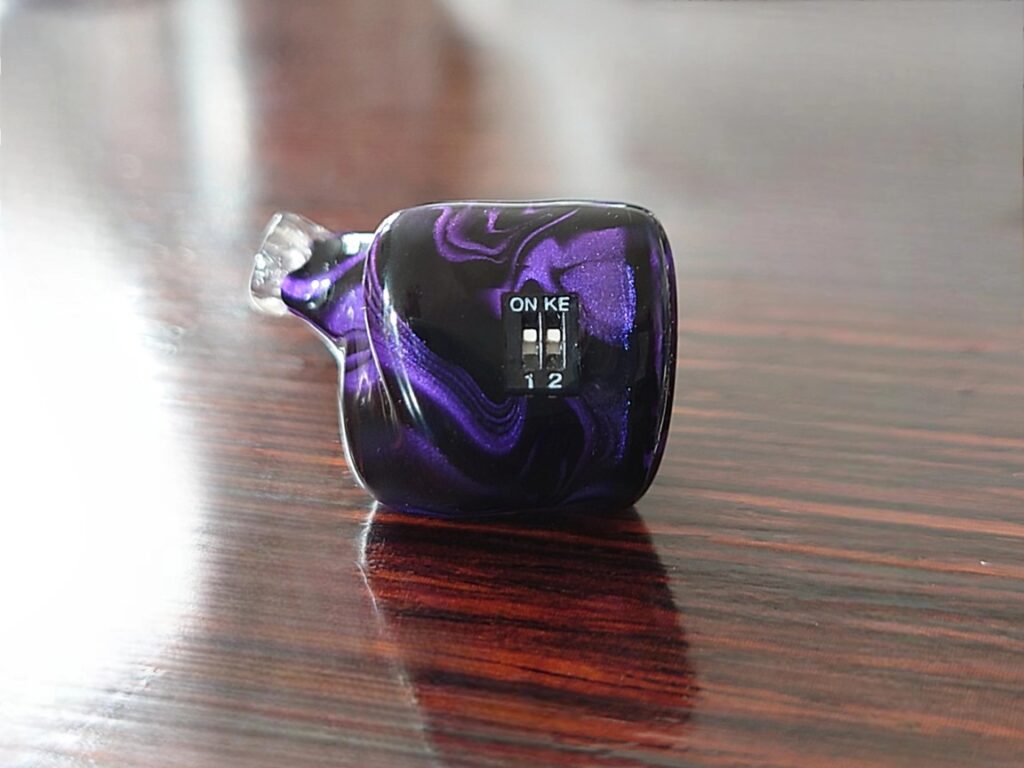
KIWI EARS QUARTET SPECIFICATIONS
- 4 drivers per side: 2 x 10mm Dynamic Drivers, 2 x Custom Balanced Armatures
- Sensitivity: 110db APL/mW
- Impedance: 32ohm
- Housing: Medical-grade resin
- Cable: 1.2 m oxygen-free silver-plated copper
- Cable plug type amp: 3.5mm
- Cable plug IEM: Detachable 0.78mm 2 Pin
- Included tips: 3 x 3 pairs of silicone tips (3 types in 3 sizes) nozzle fits most 3rd party tips.
- Tuning switches: 2 with 2 positions each enabling adjustment of treble and bass in 4 possible configurations. Tool included.
- Carry pouch included
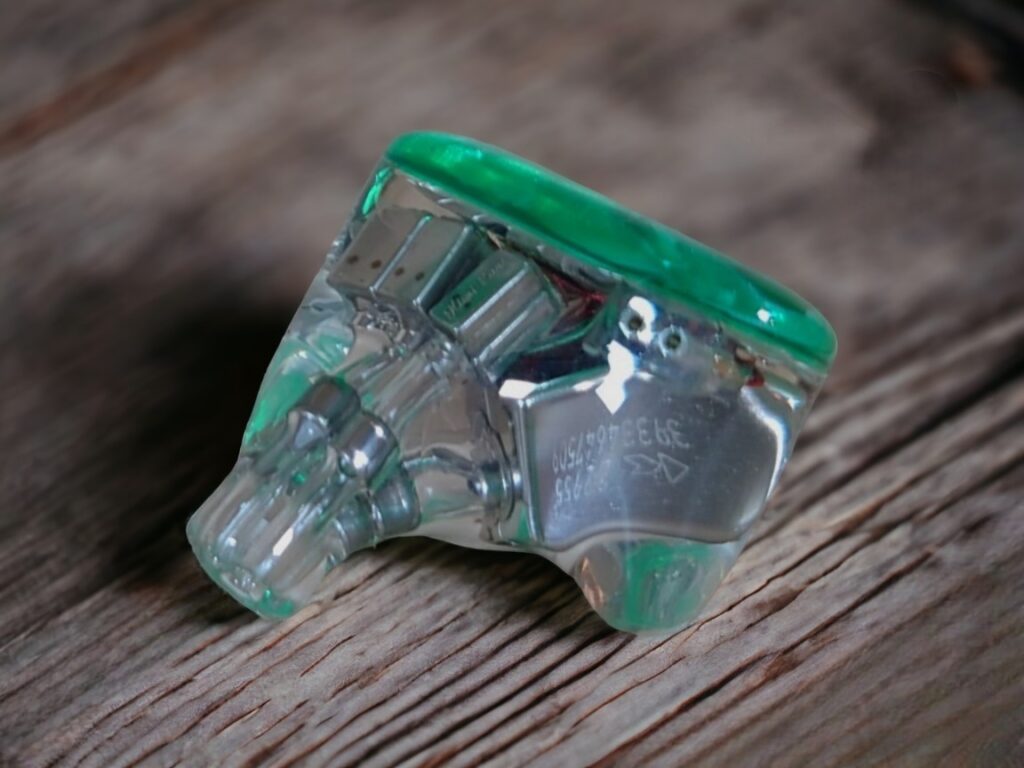
KIWI EARS ORCHESTRA LITE SPECIFICATIONS
- Drivers: Kiwi Ears Customized HI*2+Kiwi Ears Customized MID*4+Knowles LOW*2
- Impedance: 18 ohms
- Sensitivity: 112dB
- Cable: 1.2 m oxygen-free silver-plated copper
- Cable plug type amp: 3.5mm
- Cable plug IEM: Detachable 0.78mm 2 Pin
- Tips: Silicon type, 3 sizes
- Carry pouch included
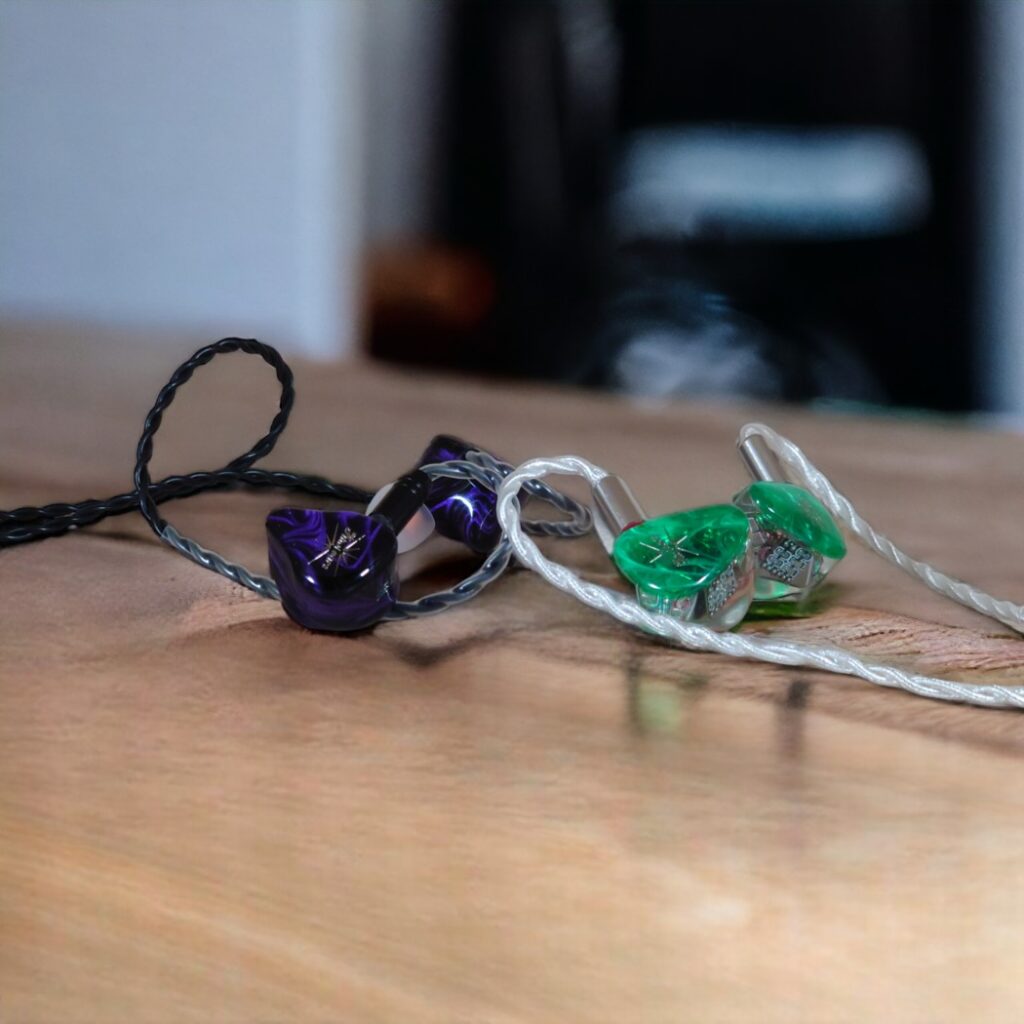
COMPARISONS
Amplifier: Topping A90. Source: RME ADI-2 DAC FS
Janacek, String Quartet no. 1 by Emerson String Quartet
The Kiwi Quartet sounds very good; energetic and full-bodied. The strings have lots of texture and energy. The Cello has some nice deep notes that really feel physical. The Orchestra Lite sounds more neutral, there’s more air and fine detail. However, I like the extra warmth of Quartet. I enjoy both.
10:15 On A Saturday Night by The Cure
The bass is really powerful with the Quartet, it really sounds like you have subwoofers in your ears. It’s bordering on too much, but not quite. The treble is nice and smooth, the mids too.
With the Orchestra Lite, the most striking difference is in the bass. It’s tighter and less prominent. The mids and treble is also crisper and has more detail. The soundstage is more airy.
Akka-Safad by Faraj Suleiman
Palestinian pianist Suleiman plays a playful and fun piece together with a bass player and a percussionist. The Quartet starts out with a smooth and pleasant piano. When the bass enters, it’s again a very strong bass. It has a warm and enveloping sound.
With the Orchestra Lite, everything is more snappy and precise. The Orchestra Lite is more detailed across the board. It also has more air and is a bit more open-sounding, with better imaging.
As Before by Olga Konkova
The Quartet is delicious in its rendering of the vocals and the piano. Percussion is snappy. The cajon hits hard and deep, here the extra bass really comes to its right.
With the Orchestra Lite, there looks bass. Although it is tighter and better defined, I miss the energy of the Quartet. The vocals and the piano are brighter and clearer, but still nice and smooth. The Orchestra Lite is generally more detailed.
Black Crow by Cassandra Wilson
The bass on the Orchestra Lite is tight and detailed. The vocals are smooth and have a good amount of texture, the percussion is very snappy.
On the Quartet, the vocals are warmer and fuller sounding, in a nice way. The bass has a little bit more quantity and it’s less tight. The treble is not as detailed, there is less air and less space between instruments.
Hail, Hail by Pearl Jam
The Orchestra Lite has a very nice and balanced presentation. Fuzz guitars are energetic sounding, there’s good layering and separation. It sounds very good.
The Quartet, on the other hand, sounds a bit muffled. It’s generally a little smoother, but in the wrong way. The bass has similar quantity but isn’t as detailed. The soundstage feels a bit closed-in with significantly less instrument separation and air.
Higdon: Violin Concerto – Fly Forward by Hilary Hahn
The Orchestra Lite lives up to its name and plays orchestral music like it was made for it. The strings and wind instruments sound very clear and have a lot of energy, there’s lots of air, detail and it offers great separation.
The Quartet is also very nice. It’s smoother, there’s not as much detail but it is still a very nice listen with great dynamics and some significant low-end rumble.
It Could Be Sweet by Portishead
The Orchestra Lite sounds clear and delicate. The bass is very present but not overly strong. There’s great separation and air.
This track sounds very good on the Quartet too, but different. The bass is very nice, but stronger than with the Orchestra Lite. The midrange is warm, lush and delicate. The sound is dynamic and engaging.
AMPLIFICATION
Desktop
The Topping A90 amp I used in the comparison obviously has the power to drive these IEMs well. It’s a very neutral-sounding amplifier. It pays well with both, but when compared to the warmer-sounding Quartet, I find the Orchestra Lite to sound even better with slightly warmer-sounding amps, like the Rebel Amp or the Fiio K5. Also, the Schiit Magni Heretic and the amp on the RME ADI-2 DAC FS sound great. Actually, all those desktop amps seem to sound a bit warmer than the A90, in a nice way. The Quartet sounds good with all the amps mentioned.
Portable
Starting with my Poco F5 (2023) phone, they both sound very good straight from the headphone jack (yes it has got a 3.5mm output). It sounds remarkably good. I didn’t expect it to sound this good. With the THX Onyx, the sound gets a bit tighter and I have to adjust the volume because it has more power. However, my F5 phone is really close. That’s impressive because the Onyx is really good for a dongle. The Xduoo Link 2 also sounds good.
There is no doubt, however, that the desktop setups sound better than the portable options. A great DAC and amp aren’t wasted on these, even though they both sound already very good on the portable options tested.
WRAPPING IT UP
Sound Signature, Soundstage and Imaging
The Orchestra Lite is a bit brighter with a more pronounced upper midrange and less bass. It’s cleaner sounding and tighter, but still smooth. The Quartet is warmer sounding with a more meaty presentation. The Orchestra Lite has a bigger soundstage with more air, better separation, layering and imaging.
Treble
I find that the Quartet has a very nice treble. It’s quite smooth but very present yet with good sparkle. However, the Orchestra Lite is even better and has significantly more detail and air.
Midrange
With the Orchestra Lite, the mids are clearer, more energetic, dynamic and upfront. They are warmer on the Quartet. With the Orchestra Lite, there’s more texture, air and detail, with the Quartet, there’s a bit more flesh and body.
Bass
The bass is the main selling point of the Quartet. It’s plentiful, sometimes a bit too much in the standard configuration of the tuning switches. However, most of the time it presents a welcome and fun low-end rumble. It can, if it gets too much, be reduced with a dip switch – feel free to read more on that in my separate Quartet review here.
The bass is less pronounced with the Orchestra Lite, but it’s tighter, more textured, detailed and layered.
Dynamics
Both headphones are very good at macro dynamics. The Quartet is very dynamic in the bass, but also the treble is quite lively. The mid-range is quite smooth, though.
The Orchestra Lite has good macro-dynamics as well as excellent micro-dynamics. Except for the bass, there’s more tonal contrast on the Orchestra Lite than with the Quartet.
Amplification
They sound good with modest sources like a phone or USB dongle but scale well with better sources. A nice desktop setup isn’t wasted.
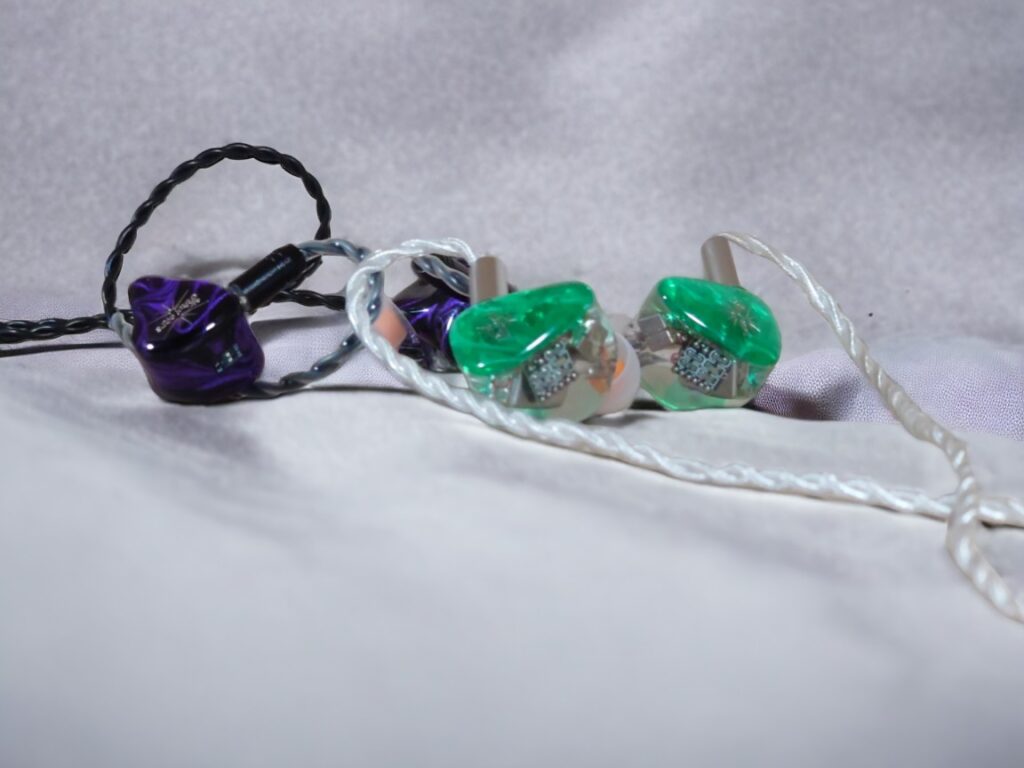
CONCLUSION
The Kiwi Ears Orchestra Lite has an open soundstage with lots of detail and a neutral and well-balanced sound profile. It also has a sense of delicate smoothness to its presentation.
The Quartet stands out for its remarkable bass. It’s significantly higher in quantity, especially deep down compared to the Orchestra Lite, which has a rather linear bass response. On some tracks this will be really noticeable, on other tracks it won’t. You can, however, use the dip switch to adjust the bass on the Quartet.
The Quartet also has a warmer tonality with a smooth midrange, but still quite an energetic treble. The Orchestra Lite is clearer and presents the music with more air, detail and subtle nuance.
You can check out the Quartet and Orchestra Lite here:
Kiwi Ears Orchestra Lite at Linsoul
Kiwi Ears Orchestra Lite on Amazon
We make earnings through affiliate links and any purchase you make on Amazon or Linsoul clicking one of our links will give us a small provision at no cost to you.
We only get a provision for items that are not returned, so there’s no incentive for us to recommend something that’s not good.
Linsoul : Headphones, Earbuds, Wireless Earbuds, Desktop DAC/AMP, Portable DAC/AMP, Digital Audio Players,
Amazon: Headphones, IEMs, Headphone Amplifiers, Home Audio or Anything else.
.
If you enjoyed this article or other content on The Headphoneer, you might consider leaving a small donation to keep this website up and running. No donation is too small. Thanks for supporting us!
If you like our work please follow us on Instagram, Facebook and Twitter , it will help us grow. Sharing is caring 🙂
